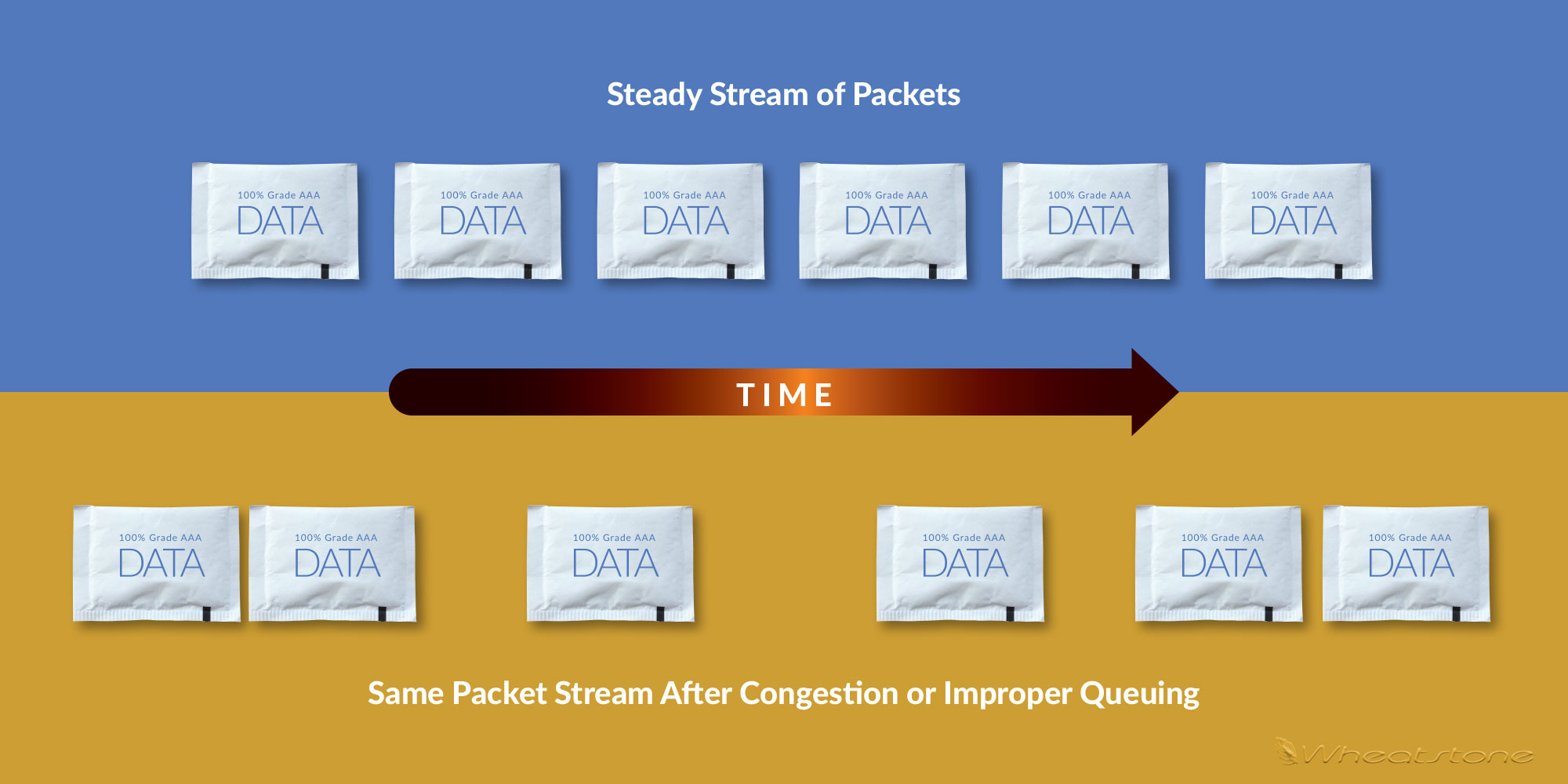WHEAT:NEWS TV
JULY 2017
Volume 4, Number 7
Got feedback or questions? Click my name below to send us an e-mail. You can also use the links at the top or bottom of the page to follow us on popular social networking sites and the tabs will take you to our most often visited pages.
Mitigating Jitter
Systems Architect
Artel Video Systems
Video and audio over IP is all the rage now and while companies can benefit greatly from deploying all-IP or hybrid-IP/fiber networks, IP infrastructures come with their own set of issues. Jitter and latency are two of the most common problems hindering broadcast quality of audio and video transmissions over IP networks. IT and video engineers who understand the causes can take steps to reduce jitter and improve audio and video quality.
What is jitter?
Jitter is the variation in packet arrival measured over time. In other words, it is the variation in the packet flow between two end points or two elements, when some packets take longer to travel from one point in the network to another. Jitter results from network congestion, network timing drift, and network route changes. Jitter is more problematic in real-time or time sensitive services like audio and video. Excessive jitter leads to artifacts that degrade the quality of the service. The amount of jitter tolerable on a network is affected by the depth of the “jitter buffer” existing in the network equipment involved in the transmission path. If left unattended buffer overflows, underflows, and missing or late packets can result, degrading the quality of the video or audio signals.
How to mitigate jitter and its effects
There are several steps network engineers can take to compensate and control jitter, including applying proper quality of service (QoS) settings to protect time sensitive transmission, properly adjusting jitter buffers on endpoint devices as well as intermediary elements, and even addressing the source of the jitter if necessary.
- QoS: Applying comprehensive QoS methods where time-sensitive services are given priority over secondary services prevents these lower priority services from congesting the network and denying service. This will help reduce the likelihood of missed or discarded packets.
- Buffering: The more jitter buffer available, the more the network can reduce the effects of jitter. Most endpoint devices and packet-based network devices have jitter buffers to compensate for network jitter. An optimal balance needs to be reached between jitter and latency, as excessive buffering adds to latency.
- Sources of jitter: The most common sources of jitter in IP transmissions are network congestion, poor network synchronization or timing, and lack of route determinism in the network.
- Network congestion can be addressed by applying proper traffic and bandwidth management techniques like appropriately engineering your network resources or policing bandwidth utilization by lower priority services or traffic
- Network timing and synchronization needs to be correctly implemented by assuring that the elements in the network in need of timing have their sources traceable to the same source and this source needs to be of high accuracy
- Route determinism is accomplished by implementing methods such as virtual private networking and virtual transport mechanisms like multi-protocol label switching (MPLS)
Migrating to IP technology brings many benefits but there are considerations on how to “harness” this powerful technology in support of time sensitive content and services. Jitter reduction is one of those considerations. Fortunately, proper network engineering in the areas of traffic and capacity management, and networking timing and synchronization mitigates and creates determinism in packet based networks.
Artel makes media transport products, which provide long-haul connectivity between remote locations and broadcast studios. Artel transport is used with WheatNet-IP audio networked studios for REMI or live remote production applications. Audio routing, control, mixing and processing are all done over long-haul connectivity through Wheatstone’s WheatNet-IP network of virtual audio services. For an overview of workflow and setup, click here.
Frank can be reached at [email protected].
Countdown To the Big Game
Live remotes are what keep broadcasters up at night. But after nine years of extravagant remotes the week before the NFL’s Big Game, Jim Hibbard of Pacific Mobile Recorders knows to expect the unexpected and is prepared like a Boy Scout! He’s the audio engineer responsible for The Dan Patrick Show NFL remote every year. Any pops, clicks, or dropouts of any kind will be heard by some 1.2 million weekly sports fans tuning into The Dan Patrick Show during the week preceding the Big Game.
In just a few months, Jim Hibbard will be packing several hundred pounds of audio necessities onto pallets and heading out to the remote site for some pre-game fun with all the guests that arrive that week in anticipation of the Big Game itself.
It’s never too early to start planning.
Jim will no doubt be dealing with all the usual issues: arranging IFB between producer/talent/director in three geographic locations, getting phone calls and bumper music from the show’s studio in Connecticut to the talent at the remote site, and handing off audio to the show’s syndicator, Premiere Radio Networks, as well as to its television producer, the DirecTV Audience Network. The show is also seen on the NBC Sports Network.
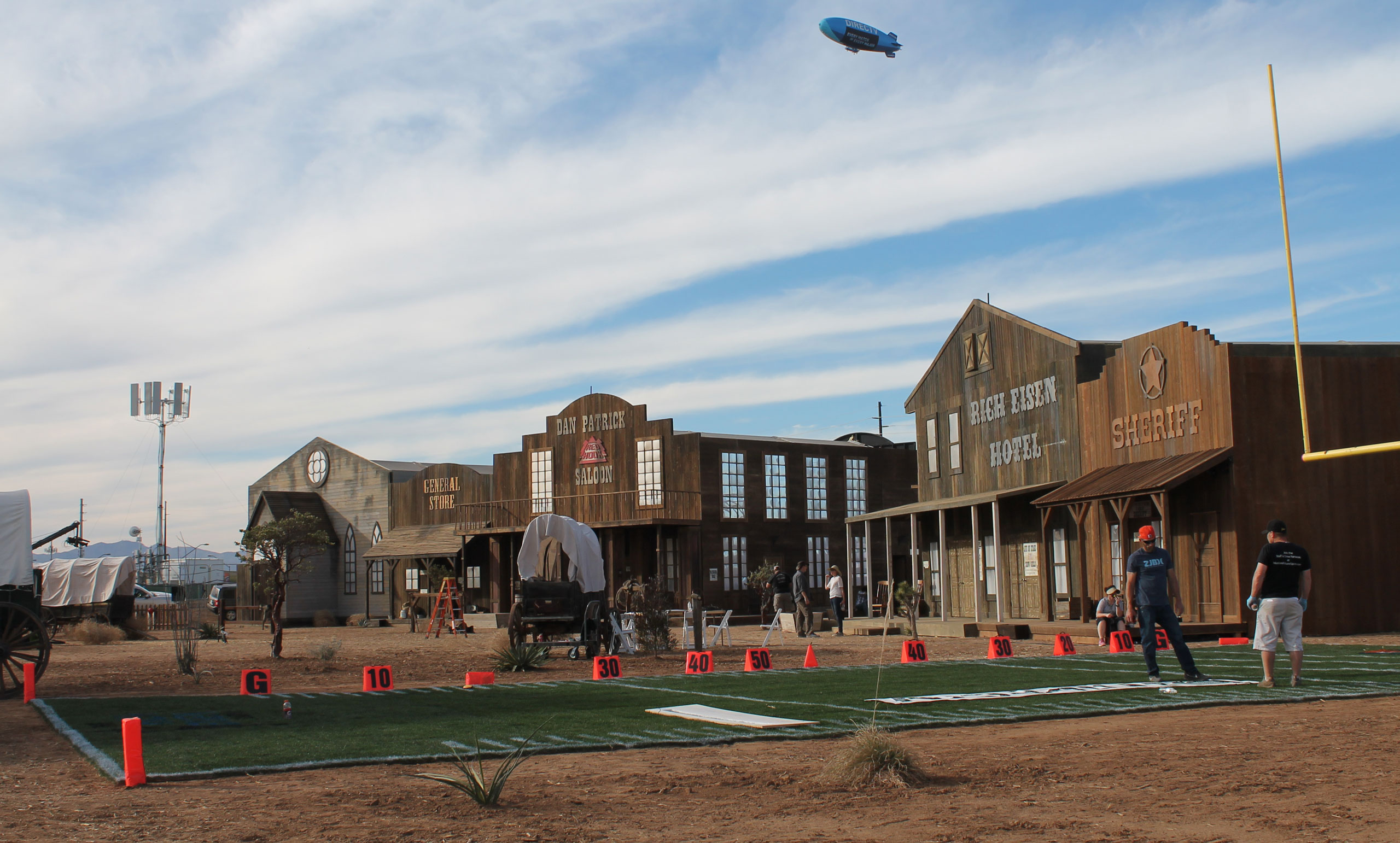 The week will likely hold a few surprises as well, starting with the many guests. The weeklong remote for The Dan Patrick Show includes any number and variety of high-profile guests, from actors Adam Sandler, Ryan Reynolds, Kevin Bacon and Jerry Seinfeld, to athletes Joe Montana, Dan Marino, Steph Curry and Emmitt Smith, plus coaches, sports commentators, and the NFL superstars themselves.
The week will likely hold a few surprises as well, starting with the many guests. The weeklong remote for The Dan Patrick Show includes any number and variety of high-profile guests, from actors Adam Sandler, Ryan Reynolds, Kevin Bacon and Jerry Seinfeld, to athletes Joe Montana, Dan Marino, Steph Curry and Emmitt Smith, plus coaches, sports commentators, and the NFL superstars themselves.
One thing’s for sure: all the audio will be running through the WheatNet-IP audio network, as it has for the past nine years.
WheatNet-IP audio runs over a fiber link using Tieline Genie and Merlin codec units, joining together operations and directors, producers, talent and content for the syndicated radio show as well as television production in separate locations.
The studios are geographically dispersed. Typically, the multi-camera shoot is switched in Los Angeles, which is some 3,000 miles from the home studio in Milford, Connecticut. But for the remote, cameras are switched in nearby production trucks that are rolled in for the occasion, and the video feed then is uplinked to Los Angeles and on to the rest of the world. Meanwhile, the main studio for the radio show is in Milford, with IP audio shuttled between the remote site and the Milford studio.
At the remote venue, the show is broadcast from a large set which serves as a ‘make-shift studio’ complete with several WheatNet-IP TS-4 remote turrets and M4IP mic preamps and a fiber link to the backstage control area, at the center of which is an IP-networked 12 channel console, the Wheatstone E-1.
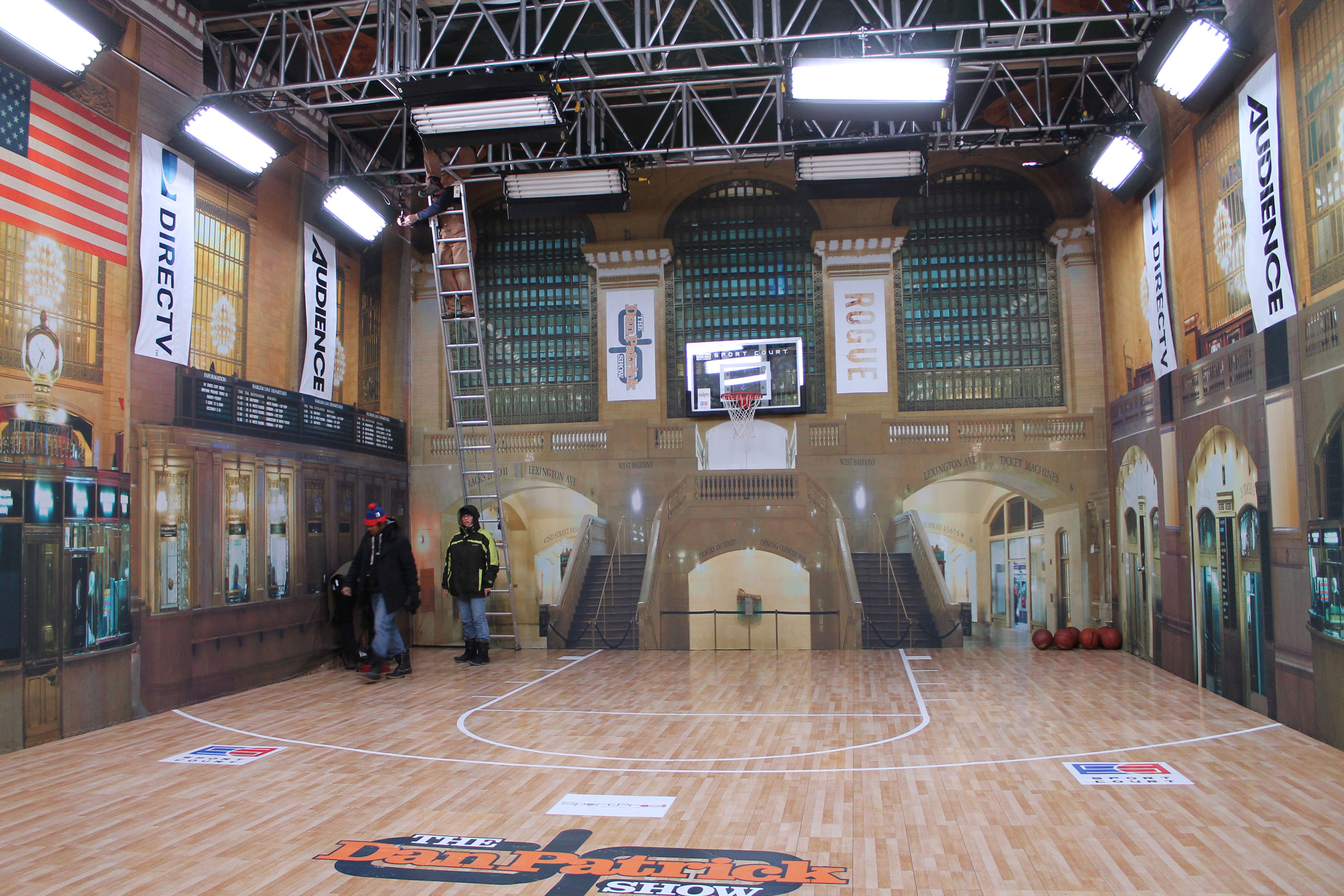 The studio setup for the 2018 game in Minneapolis remains to be seen. Each event provides unique challenges in terms of space and acoustics. One year, the remote was set in three large temporary buildings on an acre of land complete with a waterfall! Another year, the two-story set was built on the top of the parking lot at Pier 40 in lower Manhattan. That one included a half-size regulation basketball court on the second floor!
The studio setup for the 2018 game in Minneapolis remains to be seen. Each event provides unique challenges in terms of space and acoustics. One year, the remote was set in three large temporary buildings on an acre of land complete with a waterfall! Another year, the two-story set was built on the top of the parking lot at Pier 40 in lower Manhattan. That one included a half-size regulation basketball court on the second floor!
Hibbard also manages the remote audio for the Rich Eisen Radio Show during the week leading up to the Big Game.
Jim has his work cut out for him. But at least audio over IP across all studios and locations takes a few worries off his list. With all audio drops and phone calls being fed by the home studio, there’s no need to set up a separate number or additional phone lines at the remote site or to add equipment for audio drops since all feeds come through the IP connection between the remote site and the Milford studio. IP audio networking via WheatNet-IP also serves as an intercom backbone for talkback IFB.
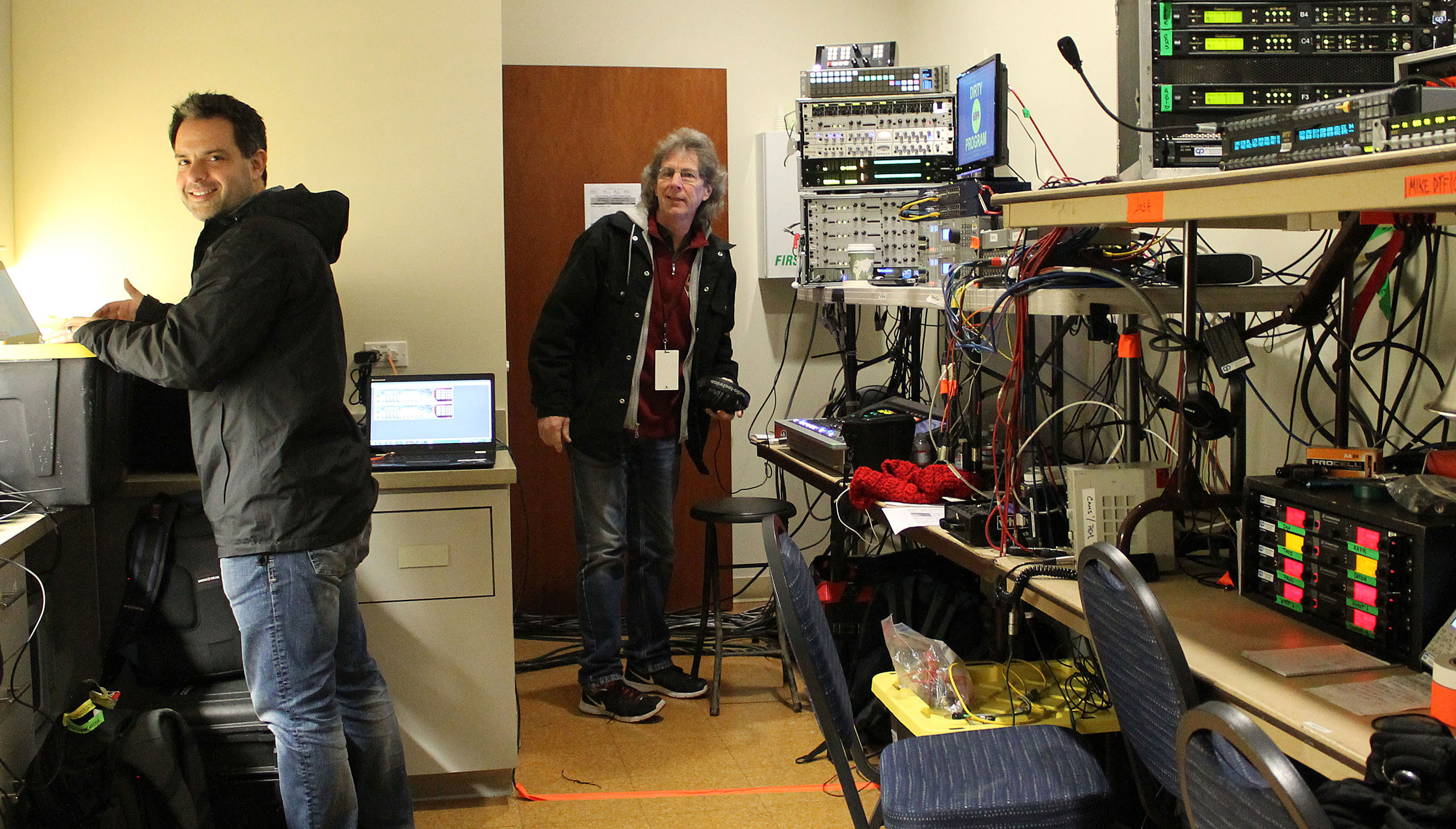 And those guests that pop in from time to time? Hibbard uses M4IP four channel mic processors for guests as well as Dan and the Danettes! The M4IP has all the dynamics processing needed to smooth out any voice, but also has an Ethernet port so all controls for those mics – including turning them on/off – run across the network and can therefore be done from the TS-4 talent stations and remote console.
And those guests that pop in from time to time? Hibbard uses M4IP four channel mic processors for guests as well as Dan and the Danettes! The M4IP has all the dynamics processing needed to smooth out any voice, but also has an Ethernet port so all controls for those mics – including turning them on/off – run across the network and can therefore be done from the TS-4 talent stations and remote console.
Hibbard says: “Using a Wheatstone console with audio over IP system gives us the flexibility and routing functions to easily provide everyone involved in the show the same comforts and quality of the home studio!”
The Dan Patrick Show is produced by DirecTV Audience Networks for television viewing and syndicated on more than 250 affiliate stations by Premiere Radio Networks.
Your IP Question Answered
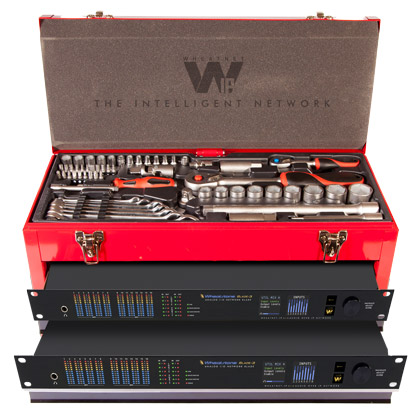
Q: I am looking at IP audio networking mainly for sharing resources in our studios. Besides sources, what are some other ways to share resources?
A: IP networking is practically synonymous with resource sharing, as we all know from our experiences with the PC network. IP audio networking takes that to a whole new level and opens up all kinds of new possibilities. For example, in the case of our own WheatNet-IP audio network, you can create a predetermined back haul, IFB feed or mix-minus for each device on the network based on its location in the network or on a fader. You can set it up so the software will ‘automagically’ give the proper return feed to the device based on its destination. So, if you bring up a mic from a remote location in the newsroom, the mix-minus from the newsroom will be transparently routed to the return feed. Likewise, if you bring up that same mic from a mixer in the remote van or truck, then the remote truck or van mix-minus will be routed to that mic. This is just one example of the tremendous flexibility built into these systems, and it’s that kind of on-the-fly flexibility that can make things happen in a very short time frame.

Wheatstone
-
WDWS-AM (Champaign, IL) purchased three LX-24 and two L-8 control surfaces through RF Specialties of Missouri.
-
Nashville Public Radio’s WPLN-FM (Nashville, TN) purchased four additional BLADEs for an existing WheatNet-IP audio network.
-
WHQR-FM (Wilmington, NC) purchased four WheatNet-IP audio network BLADEs.
-
iHeartMedia (Boston, MA) purchased three I/O BLADEs to expand an existing WheatNet-IP audio network.
-
WUNC-FM, North Carolina Public Radio, (Chapel Hill, NC) purchased an E-6 control surface and Gibraltar router to expand an existing WheatNet-IP audio network.
-
National Basketball Association (Secaucus, NJ) purchased a virtual mixing system.
-
Charter / New York 1 News (New York, NY) purchased a MADI card for an existing Wheatstone router system.
-
Cox Media (Orlando, FL) purchased three LX-24 control surfaces and WheatNet-IP audio networking.
-
Cox Media (Jacksonville, FL) purchased three LXE control surfaces and 30 WheatNet-IP audio network BLADEs.
-
KePadre Radio (San Francisco, CA) purchased LX-24, L-8 and E-1 control surfaces and WheatNet-IP audio network BLADEs.
Audioarts Engineering
-
WDZU-FM (Green Bay, WI) purchased an Air-5 console.
-
KOAL-AM (Price, UT) purchased an Air-4 console.
-
KMXE-FM (Red Lodge, MT) purchased an Air-4 console.
Wheatstone Audio Processing
-
Radio One (Houston, TX) purchased four M1 mic processors.
-
WUOM-FM, University of Michigan, (Ann Arbor, MI) purchased an Aura8-IP multi-mode audio processor.
-
Entercom (Denver, CO) purchased two AirAura X3 spectral audio processors and four SG-192 stereo generators.
-
IHeartMedia (New York, NY) purchased an M4IP-USB four channel mic processor and an M1 mic processor.
-
Beasley Broadcast (Boston, MA) purchased an FM-55 audio processor.
-
Beasley Broadcast (Augusta, GA) purchased an FM-55 audio processor.
-
Texarkana Radio (Texarkana, TX) purchased two AirAura X1 audio processors.
VoxPro
-
Saga Communications (Bellingham, WA) purchased a VoxPro 6 digital audio recorder/editor.
-
Univision (Miami, FL) purchased two VoxPro 6 digital audio recorder/editors.
-
CBS (Atlanta, GA) purchased a VoxPro 6 digital audio recorder/editor.
-
WAWZ-FM (Trenton, NJ) purchased a VoxPro6 digital audio recorder/editor.
Scott Fybush Interviews Jim Hibbard of Pacific Mobile Recorders & Studio Builders
Scott Fybush talks with Jim Hibbard of Pacific Mobile Recorders & Studio Builders about some of his recent projects involving Wheatstone's WheatNet-IP, on the floor at NAB 2017.

